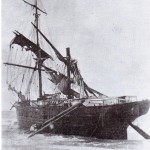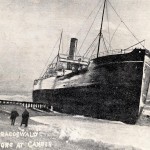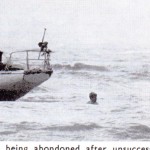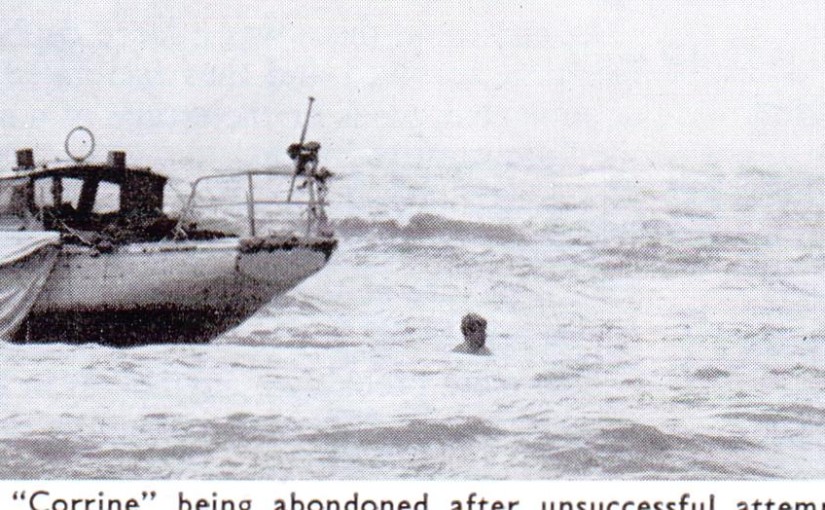Aground in the Bay
Old photographs by kind permission of Mr. B. Jones
The sea has been a magnet to man since the first recorded history of the world, it first provided food and then presented a challenge. The challenge was accepted, first by the Vikings from Scandinavia then by the English and Spaniards, and there were few places on this earth that were not charted and explored by these early adventurers in their wooden ships.
The English, probably because they were an island people, became the greatest sailors and discoverers. Even in modern times, when the safety and security of the island race is in jeopardy, the examples set by Drake and Nelson inspire the British sailors to daring new heroic deeds against the enemies of the Crown.
Through the years, however, in peace and in war, the greatest enemy remains constantly the cruel sea. Reluctant to give, always ready to take, the great mass of uncontrolled water is as unpredictable as ever.
Shipwrecks are not uncommon in this corner of South East England, and Rye Bay has claimed innumerable victims over the years. A ship aground is not necessarily a ship wrecked. Frantic efforts are always made to re-float a vessel before the sea takes complete charge and pounds it unmercifully to pieces on the shore.

The tragic picture of the fine old three-master aground and helpless, with her masts snapped off like matchsticks, demonstrates the ruthless power of the sea. She came aground in the Bay near Dungeness on a dark windy night in November, 1898,
a Swedish barquentine, “Silo,” she was laden with a cargo of timber. Attempts to re-float here were unsuccessful, the timber was unloaded and sold, and this fine vessel, probably built and brought into service in Nelson’s time, was left to be battered to pieces in the raging surf.

5.5. “Cragoswald,” pictured above, ran ashore at Camber shortly after the turn of the century, and many attempts were made to re-float her. A great amount of cargo was unloaded and transported off the beach on pony cans. Eventually hundreds of empty oil drums were buried under the hull and with the aid of this extra buoyancy two powerful tugs were able to tow her off and get her into Rye Harbour where repairs were carried out.

It is interesting to note the difference in size between the “Cragoswald” and the yacht “Corrine,” which ran aground at almost the same spot sixty years later. It seems hardly credible that over this period of time the depth of water has gone down by such a great amount. The “Corrine” was not rescued despite several attempts to re-float her.
The Yacht “Corrine” was abandoned after unsuccessful attempt by local Fishing Boat to tow her clear
From the March 1966 Issue of “Rye’s Own”
All articles, photographs, films and drawings on this web site are World Copyright Protected. No reproduction for publication without prior arrangement. © World Copyright 2016
